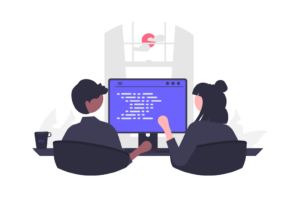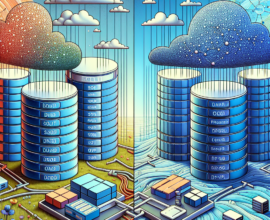The Mac OS or Macintosh Operating System is an operating system that was designed by Apple Inc. with the motive of installing and operating it on the Apple Macintosh computer series. The first version of the Mac Operating System was released by Apple Inc. in the year 2001 and since then many versions have been rolled out with many technological changes taking place in the operating system. It is a Graphical User Interface which initially was referred to as the System Software as it was launched in the era of the MS-DOS dominance. It by default is made functional to operate only on the Apple manufactured devices and does not support any x85, x86 architecture devices. It even is regarded as the Graphical User Interface system that inspired Microsoft Corporation to develop and market its own GUI.
Evolution of Mac OS
- Cheetah
Cheetah was the very first version that was released by the Mac OS X. It had many radical changes that were not witnessed in the Mac OS 9. It had an Aqua User Interface which showed title bars with a brushed metal look, brightly coloured buttons on the screen and photo-realistic icons and tabs for navigation. Cheetah was the first in which the dock was introduced which still to date is the reason for the notable appearance of the Mac.
- Puma
Puma was the next version which was rolled out in the year 2001 itself but had faster menu navigation and log-in and even the configuration options were quite fast as compared to the Cheetah. It even had a movable dock and new system menus from where the volume, battery life, etc. could be controlled.
- Jaguar
Released in the year 2002, the Jaguar version featured an updated mail app that was capable of placing spam in a separate folder. iChat then became Apple’s default messaging app which had built-in compatibility with the AOL Messenger. It was the first version in which the user could actually magnify the content and also launch applications with the voice.
- Panther
Panther was the succeeding version which was announced in the year 2003 and had features such as Expose that let users instantly open and view windows at once and then view app files. It was in this version that Safari web browser became the default web browser of the Mac-powered devices.
- Tiger
Tiger introduced in the year 2004 was the one that included the Universal Search Client, Spotlight, Dashboard and many RSS features. Also, an Automator was introduced that included the application tasks and workflows. It even became the first version that supported the Apple-Intel architecture and also became the longest-running Mac OS version.
- Leopard
In the year 2006, the Mac OS X Leopard version was launched in which a three-dimensional reflective Dock, new higher resolution icons, and semi-transparent menu bars were introduced. Even Finder, Quick Look, Spaces, Time Machine, and Boot Camp were added to the version. It even did unofficially support multi-touch gestures.
- Snow Leopard
OS X Snow Leopard was introduced in the year 2009 which included updated features for all of Apple’s applications such as the Grand Central Dispatch that the software developers made use of to write applications and even OpenCL was introduced in this version. It even came with features such as faster disk ejecting, faster boot and shut down times, quicker Time Machine backup and faster installation of the operating system.
- Lion
The Snow Leopard was followed by the launch of the Lion version which supported multi-touch versions and had added gestures and responses such as rubber-band scrolling, full-screen swiping and page and image zooming. Even Expose, Dashboard, Resume, Launchpad, and Spaces were introduced in this version.
- Mountain Lion
The 2012 marked the launch of the Mountain Lion. This is the version wherein the iCloud synced calendars, emails, documents, reminders, documents, notes, contacts, etc. between the various device touches. Also, apps from iOS were brought over in this version and even the social media accounts were integrated so that the users could set up and manage their accounts. Also, a Gatekeeper was added that prevented the users from downloading or installing any malicious software to the system.
- Mavericks
Mavericks in the year 2013 were introduced with the addition of the iBook from the iPad, Maps from the iOS, iCloud Keychain stores, Finder and much more. This was the first version wherein operating system updates were available for free.
- Yosemite
Yosemite was the later version which included a flat graphical design, blurred translucent effects and much more to the previous version. It included Handoff which could allow users to write an email or browse Safari from an iPhone to a Mac or to an iPad and the other way around.
- El Captain
El Captain in the year 2015 was introduced to enhance the design, usability, performance and security of the operating system. Even many features such as Spotlight, Split View and Mission Control were added to the software version. Metal too was included in this version that gave direct access to the games and apps to the Mac’s graphical processor.
- Sierra
In 2016, Sierra was brought out that could actually access Siri and had search results that could actually be saved and pinned in the Notification area. Also, Auto Unlock and Apple Pay-like features were introduced in this version. The voice assistant added could actually help users find any flies, or folders and quickly access all such stuff.
- High Sierra
High Sierra had been introduced in the year 2017 which had Metal version 2 being added which provided additional graphical capabilities and natural language processing being added to the software version. Even Apple File System was added in this version and developers were allowed to create interactive virtual reality in this version which was not possible in the previous versions.
- Mojave
Mojave was in the year 2018, with its main feature it being the Dark View mode that could possibly turn the entire UI dark. The Stack feature made organized cluttered desktops by stacking similar files automatically. The News, Stocks, Voice Memos and Home apps from iOS arrive on the desktop; Group FaceTime allows up to 32 users on a simultaneous video chat; and the Mac App Store gets a fresh design. Security enhancements via Safari’s Intelligent Tracking Prevention block user tracking without permission.
- Catalina
For Mac users launched in the year 2019, Catalina adds a new feature called Sidecar that’s designed to extend the Mac desktop to the iPad. With Sidecar enabled, the tablet becomes an input device using Apple Pencil. And with new Voice Control features, Apple is turning to Siri to allow users to operate their Macs with voice alone. For developers, Apple introduced Mac Catalyst, which allows them to build macOS versions of iPad apps. And for the security-conscious, Apple has made several under-the-hood improvements, including a read-only system volume to help prevent data loss.
- Big Sur
The Big Sur launched in the year 2020 is less about the operating system and more about the hardware that will possibly be running it: Macs using Apple’s Apple Silicon chips. It gets a UI redesign that includes curved windows, redesigned Dock icons, a new Control Centre that is accessible from the menu bar, a redesigned Notification Centre, upgrades to make the Safari browser faster and more customizable, and an overhauled Time Machine backup system.
- Monterey
MacOS 12 or the Monterey is the latest version that is expected to be out by 2021. Monterey offers a variety of changes aimed at making it easier for Mac users to connect online and stay focused on what they’re doing on the desktop. Safari gets an overhaul that moves tabs high in the browser window, effectively combining tabs, the toolbar, and the search field, and allows users to create tab groups that can be shared. Monterey also gets Shortcuts, which helps users automate tasks and is integrated throughout the OS. FaceTime gets a slew of new features, including Voice Isolation (to make it easier to hear people on a video call) and Wide Spectrum (so callers can hear everything, not just a person’s voice); Share Play, so multiple people in different locations can collaborate on work, or even watch the same movie and chat about it in real-time; blurred backgrounds; and a new grid view.





